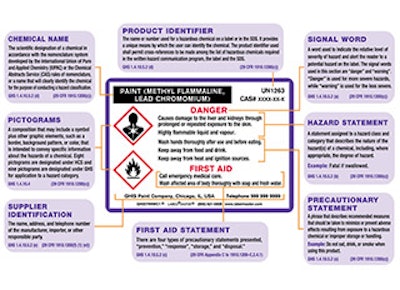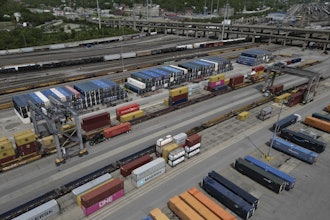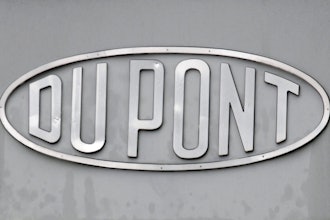
With less than a year left in the countdown to required GHS Hazard Communication Standard compliance, chemical companies will soon be in the throes of converting from the MSDS format to the new SDS format, if they aren't already. For most, this transition will require utilizing an outside company's GHS services. Chem.Info recently sat down with Paul Burgess, an expert on the Hazard Communication Standard at Labelmaster, to talk about what chemical manufacturers need to consider now that the deadline is fast approaching.
What change within the new standard will have the biggest impact on chemical manufacturers?
The biggest change is the requirement to classify products according to the regulatory framework in the US 29 CFR 1910.1200, using one’s own specifications. Also, label and Safety Data Sheet (SDS) elements are to be very strictly constructed based on the same regulation as opposed to the wide latitude in labeling and MSDS’s granted under the “old” version of the Hazard Communication Standard (HCS).
What issues will chemical companies face as they make the transition?
It is likely that they will face time pressures if they have an extensive inventory of available chemicals that require classification and labeling changes. Also, it is probable that they will face increased scrutiny from federal inspectors enforcing compliance and customer EH&S personnel worried about getting accurate information under the new standards.
What do companies need to consider before implementing a system or service to help with the transition?
The strict standards being put in place will mean that companies will face increased liability risk if they reclassify or change the information provided by the original formulator of the product. The previous standard was much more subjective and open to individual interpretation. The new standard is not.
What practical guidance or resources can you offer to companies in the midst of their transition?
The new standard, once implemented, will provide a very solid framework of easily understandable, internationally harmonized and definitively stated information about chemical products. Transitioning from the old to the new framework is admittedly somewhat challenging; however, the long-term end results should be worth the effort involved, especially to manufacturers interested in global markets. We have a GHS Hazcom landing page on our website, www.labelmaster.co/GHS, which has a plethora of product information and four free-of-charge webinars available for download that offer a thorough explanation of the new standard and what is expected under it.
How does the Labelmaster process work?
Labelmaster, in partnership with Quantum, offers a full service MSDS to SDS conversion service to help businesses comply quickly and easily with the new GHS, removing the time-consuming burden from chemical manufacturers’ internal staff. The process includes reviewing current MSDS sheets and providing conversion options to ensure the new SDS form is correct. The system handles the entire process from reviewing documents all the way to compliant labeling of containers for downstream use.
The first step in the process is to provide the GHS conversion company with your current MSDSs and, if not given on the sheets, your formulas and all pertinent Section 1 contact and naming information. Consider having a conversation at this point about what formats and languages you would like your SDSs produced.
Next is the conversion process. You can do a sample conversion ahead of time, so you can see if you like the process and product, turnaround time and working with the company in general. Take advantage of this opportunity because some companies will offer the sample as a discount, creating a low-risk trial run.
Another important aspect of MSDS to SDS service comes after the conversion – the review process. Labelmaster will convert your MSDSs in batches, so you can look at the first 30 or so SDSs and determine if there is anything in the sheets you would like fixed. This approach is preferred to waiting until all your safety data sheets are complete and having to redo hundreds of them.
The last part of the conversion process is delivery. Labelmaster will upload your completed SDSs to a website so you can download them in full in real-time.
Paul Burgess is a Staff Regulatory Specialist at Labelmaster and the company’s expert on OSHA’s Hazard Communication Standard. Paul’s training includes degrees  from the University of Washington and Governors State University, professional certification as a Dangerous Goods Safety Advisor (DGSA), an EPA Hazardous Waste Operations and Emergency Response (HAZWOPER) Specialist and training in the federal Transportation Worker Identification Credential (TWIC) program. Paul has more than 30 years of experience in the hazard communication, dangerous goods, and environmental, health and safety sectors, including the U.S. Navy and the trucking, heavy manufacturing and railroad industries.
from the University of Washington and Governors State University, professional certification as a Dangerous Goods Safety Advisor (DGSA), an EPA Hazardous Waste Operations and Emergency Response (HAZWOPER) Specialist and training in the federal Transportation Worker Identification Credential (TWIC) program. Paul has more than 30 years of experience in the hazard communication, dangerous goods, and environmental, health and safety sectors, including the U.S. Navy and the trucking, heavy manufacturing and railroad industries.



















